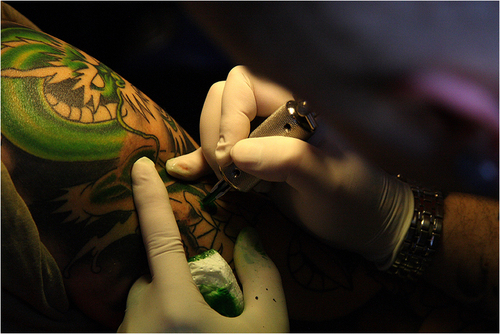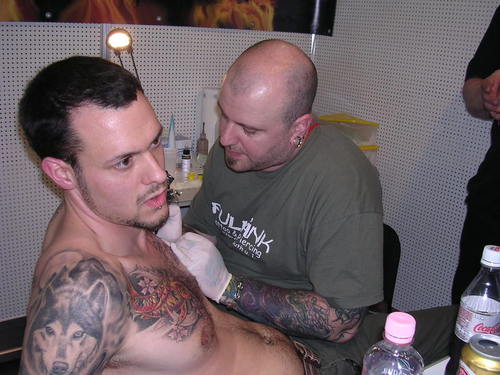
Because tattooing is both an art form and a body treatment, its important to learn the best procedures for safe tattooing before embarking on a career as a tattoo artist. No one should consider buying a tattoo kit and starting to tattoo without becoming familiar with the best procedures for tattooing.
Learning these procedures will help any tattoo artist achieve lasting success.
There are many steps to becoming a successful tattoo artist, but here are 3 of the most important steps to tattooing success.
Step #1 Build an Art Portfolio and Find a Tattoo Apprenticeship
If you want to be a tattoo artist, you should be comfortable with your drawing skills. Tattooing requires a good sense of line and color. If youre not confident as an artist but have a desire to learn, then take an art class or buy an art book and begin to practice your drawing. Look at tattoo designs by tattoo artists (known as flash art) and begin to create some designs of your own.
Assemble your best work and display it in an artists portfolio or binder.
Once you have a portfolio of your best art work, youll be better prepared to find a tattoo apprenticeship. An apprenticeship is a form of on-the-job training, where an experienced tattoo artist teaches you how to tattoo. Dont expect to be paid as an apprentice in fact, you may end up paying for the privilege of learning how to tattoo from a master tattoo artist. Prepare to save money for an apprenticeship and to work at another job while youre apprenticing. Finally, give serious thought to which tattoo artist you apprentice with and make sure its someone whose work you respect and that you can get along with well.
Step #2 Create Stunning Tattoo Designs, As you learn how to tattoo in an apprenticeship, you will become more skilled in creating tattoo designs. Each tattoo you apply becomes a permanent feature on the body of your client, so you want to make sure you deliver a stunning design. This doesnt mean you have to create each and every tattoo design. A client may come in with an existing design from a tattoo magazine or clients may select a flash design from the shops collection.
The important thing is to listen to the clients requirements and provide suggestions about how to get the most impact from a design.
Often you will begin with flash and then customize it for the client by adding or removing design elements. It may be necessary to provide a client with several paper drafts of a design before you arrive at a piece of art that you both love. Dont worry too much about the time you spend doing this its all part of the job. Just be sure to charge the client enough to cover the time you spend on the design stage of the tattoo.
Once an eye-catching design has been chosen, its up to the tattoo artist to create a work of art on the clients skin. Different outline and shading techniques can be used to enhance the basic design. Color should be carefully introduced to help bring the tattoo to life. As you learn more about how to tattoo and your experience in tattooing grows, youll learn how to use the right amount of detail in a design, how to position it correctly on the body, and how to create clean outlines, graduated shading and even color.
Step #3 Practice Sanitary Tattoo Procedures
The final important step in knowing how to tattoo is to understand and follow standard sanitary procedures.
A tattoo requires penetration of a clients skin, so you must recognize and eliminate the risk of infection and disease transmission. One of the most important sanitary procedures is making sure that tattoo needles and ink caps are single-use only and replaced for each new client. In addition, the work area where the tattoo is applied must be cleaned thoroughly with disinfectant before tattooing begins and the tattoo artist must wear gloves during the tattoo procedure. Following sanitary procedures will help ensure that each tattoo client receives the best possible treatment during the tattoo process.













